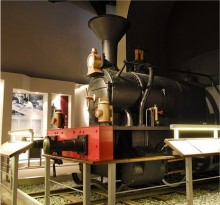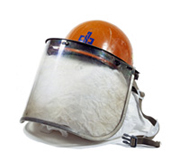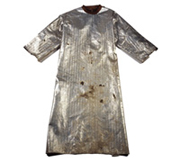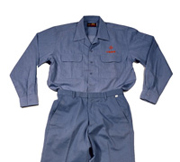TELDAP Collections
| History of Industrial Development in Taiwan (Part II) |
|
Throughout Taiwan’s economic development, many of Taiwan’s industries swept international markets, established numerous “Taiwan No. 1” records and earned huge amounts of foreign exchange. Part II continues with the introductions of these industries and provides a history timeline of their development.
8. Petrochemical Industry
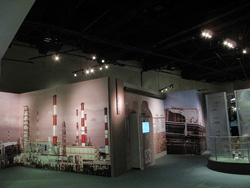 For decades, the prosperity of the downstream products of petrochemical industry has accelerated the demand of midstream products. Moreover, with reverse integration, the government contributed to the establishment of the petrochemical upstream plants, and formed a compact industry chain regarded as the steady base for Taiwanese economic development. For decades, the prosperity of the downstream products of petrochemical industry has accelerated the demand of midstream products. Moreover, with reverse integration, the government contributed to the establishment of the petrochemical upstream plants, and formed a compact industry chain regarded as the steady base for Taiwanese economic development.The petrochemical downstream processed products cover almost every domain of our daily necessities. The processed products are sold all over the world. In 1980s, one out of every five people wore rubber shoes made in Taiwan. Taiwan was once regarded as the Nation of Umbrellas, the Nation of Toys, the Nation of Christmas Lights, the Nation of Plastic Shoes, the Nation of Electronic Components, and the Nation of Ready-made Clothes. These achievements are all related to petrochemistry. Additionally, some petrochemical product yields in Taiwan have been extraordinary in the world, such as having CHIMEI as the first in ABS production, PTA as the second in polyester fiber raw material production, holding a 70% market share in computer discs production in the world, and 60% market share in computer mouse manufacturing.
The petrochemical industry of Taiwan had undergone the development of post-war prosperity and formed an enormous system. The petrochemical downstream processing industry was formed by thousands of factories and stores of different scales. Its related product yields occupied 30% of the entire manufacturing market. In addition, petrochemical materials such as plastics, synthetic fibers, and synthetic rubbers have given Taiwan enormous foreign exchange earnings.
A great number of petrochemical products are necessary items found in daily life, including our food, clothes, houses, vehicles, recreations, entertainments, medical treatments, and so forth.
9. Semiconductor Industry
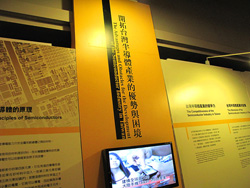 For forty years, the information technology industry of Taiwan has been progressing greatly, not only taking the lead all over the world but also admired as a "Technology Island" that draws worldwide attention. Besides the insights of the predecessors such as Li Kuo-ting, Sun Yun-hsuan, Pan Wen-yuan, and Hsu Hsien-hsiu and so on, the institutional arrangement also plays an important role. The establishments of Industrial Technology Research Institute, Hsinchu Science Park, and National Chip Implementation Center influentially contribute to the improvement of technologies and capabilities of the semiconductor industry. For forty years, the information technology industry of Taiwan has been progressing greatly, not only taking the lead all over the world but also admired as a "Technology Island" that draws worldwide attention. Besides the insights of the predecessors such as Li Kuo-ting, Sun Yun-hsuan, Pan Wen-yuan, and Hsu Hsien-hsiu and so on, the institutional arrangement also plays an important role. The establishments of Industrial Technology Research Institute, Hsinchu Science Park, and National Chip Implementation Center influentially contribute to the improvement of technologies and capabilities of the semiconductor industry.The early electronic industry in Taiwan is based on the export processing with cheap labour. The export policy of Taiwan in the 60s attracted the American clients to move the low-tech processing in the production of semiconductor such as packaging to Taiwan and thus started the semiconductor industry in Taiwan. Hua-tai, Wang-pang, Chi-chen, and Huan-yu are the pioneers of the local semiconductor industry. Although many difficulties happened when the industry just started, it developed many future talents for the Information and Electronic industry in Taiwan. On education, in 1964, National Chao-tung University established the semiconductor laboratory, which plays a key role in educating the local talents of semiconductor.
In the early 1970s, Taiwan eagerly developed the IC industry. In 1974, Electronic Research Centre (the present Electronic & Optoelectronics Research Laboratory) was established to promote the IC industry through introducing the IC design and production technology from the United States. In the same time, Technical Advisory Committee (TAC) was established. Through TAC, in 1976 the Electronic Research Centre transferred the production technology from RCA. The process of the transfer from RCA is a “deep-rooted” policy and is still a unique model of the technology transfer in Taiwan. It not only introduced the key technology into Taiwan, but also became the flowerbed for the future Information Electronic Industry.
In 1980, the Science Park was established. Following the establishment of Hsinchu Science Park and the spin-off companies of ITRI, many overseas scholars and the private investment are gradually into the IC industry. The semiconductor industry in Taiwan gradually shifted from the downstream packaging (based on the foreign investment) to the upstream design, photomask industry, and midstream production led by the local business.
With more than ten years of cultivating added with the emergence of the capital market, more and more private invested companies started to expand after the 90’s. At the same time, many new companies were also established. Till then, Taiwan’s semiconductor industry was no longer driven by the central government. The development of the industry showed its transformation from a labor intensive industry to a capital intensive one and now to technology-oriented. From 1960’s foreign invested complete-packaging industry, we now see local business with a complete range of up-stream (design, photomasking), mid-stream (manufacture) and down-stream (packaging, testing) suppliers.
10. Steel Industry
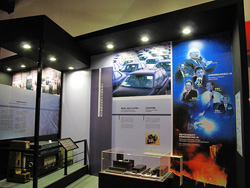 A skyscraper needs supports of steel to stand tall. A car needs a chassis of steel to run free. A long-span bridge needs steel to connect the banks of a river. Internet reaches every corner of the world. A computer needs a case of steel to make information exchange possible. From the tiniest screws to the gears that drive production; from the refrigerator, oven and washing machine in your house to the umbrella that keeps you from burning sun and torrential rain; products made of steel have many faces that are hard to image. Steel and modern life are so closely related. Steel industry is a business that produces 1,261.9 billion NTD (as of 2006), ranking the third in Taiwan. It often referred to as “the mother of all industries.” A skyscraper needs supports of steel to stand tall. A car needs a chassis of steel to run free. A long-span bridge needs steel to connect the banks of a river. Internet reaches every corner of the world. A computer needs a case of steel to make information exchange possible. From the tiniest screws to the gears that drive production; from the refrigerator, oven and washing machine in your house to the umbrella that keeps you from burning sun and torrential rain; products made of steel have many faces that are hard to image. Steel and modern life are so closely related. Steel industry is a business that produces 1,261.9 billion NTD (as of 2006), ranking the third in Taiwan. It often referred to as “the mother of all industries.”The steel industry in Taiwan started from refinery of scrap metals and ship recycling, and advanced to integrated steel mill and electric arc refinery. Up to this point, the solid foundation of Taiwan’s steel industry is completed. There is a complete system of up, middle and down streams that provide independent production of numerous types of steel, save several very special types of steel. A complete system of steel industry is established.
(1) Evolution of Taiwan’s steel industry Infancy - before 1970s:
Tang Eng Iron Works became the pioneer of Taiwan’s ship recycling in 1948 when it started salvaging the Miliwan, a Japanese war ship sunk offshore of Kaohsiung in WWII. Later, due to the booming of ship recycling, steel industry was supplied with enormous amount of scrap metals and steel ripped off from recycled ships. The government stepped in for help and guidance, and this is when Taiwan became known as the “Kingdom of Ship Recycling.”
(2) Growing pain - Mid 1970s:
China Steel established its integrated steel mill and started the production of hot and cold-rolled steel products. The production of crude steel reached 3.25 million tons.
(3) Maturity - 1980s:
The steel industry started to its transformation into an industry that is skill-intensive, capital-intensive and technology-oriented in response to economic development. The phase 1 and 2 expansion of China Steel, stainless steel mill of Tang Eng and other private hot and cold rolling mills started production. The up and down streams of the steel industry system was taking shape and the industry was moving into maturity.
(4) Expansion - 1990s:
Under the pressure of over-expanding production, environmental demands and relocation of downstream industries to other countries, the steel industry, suffering unbalanced supplies and demands, was looking for exports and the vast market in China. This was the period of expansion in production scale and extent of sales.
(5) Integration - 2000s:
For the development of high value industry and in response to the competition of low-priced Chinese steel, Taiwan’s steel industry started to establish strategic R&D alliance to promote solutions such as industrial technical upgrades and strategic investments, and to set the path toward higher added value and innovation-oriented development. This is the period that a full-scale integration was at its highest peak.
The Outfit for Iron Smelting Operators
History timeline and milestones
Text and images are provided by National Science and Technology Museum
|








